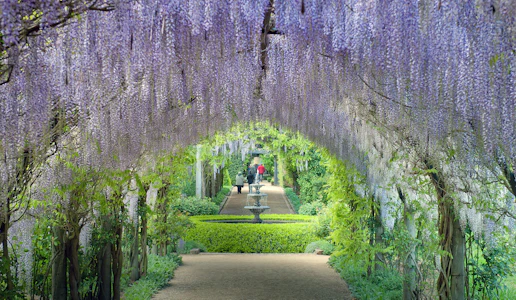
Strawberries in the Yarra Valley and Dandenong Ranges
Strawberries were first commercially grown in Victoria's Yarra Valley during the 1950s. Strawberry production started in this region as migrant families begun to settle on the outskirts of Melbourne, particularly in those areas with rich fertile soils.
Today there is close to 100 strawberry farms within Victoria, and they spread from Portland in the south west to Wodonga in the north east. However, the majority of farms, 75 percent, are still located within the Yarra Valley, a short 45 minutes from Melbourne.
Selecting:
Size plays no part in determining the perfect strawberry. In fact, small strawberries are equally as sweet and juicy as large ones. The perfect strawberry should be fully coloured, firm, bright, plump and shiny. Make sure the cap (calyx) is attached, green and fresh-looking.
Storing:
The moisture content of strawberries is high, so always remove fruit from punnets and place in a large container lined with absorbent paper. Strawberries are best stored at four degrees Celsius, either uncovered or loosely covered. Serve at room temperature. Only remove their caps after washing and just prior to use.
Freezing:
Are you disappointed when the strawberry season comes to a close? You’re not the only one. But there’s really no need to say goodbye to the berry – freeze some strawberries for winter instead.
Freezing strawberries is easy – the key is to remember to freeze them individually as this will ensure maximum firmness once they’re defrosted. You can safely keep strawberries frozen for up to one year, which gives you plenty of time to turn them into jams, sauces and desserts or to use them in smoothies and other delicious drinks like daiquiris or punch.
Pick plump, ripe berries to freeze, then rinse them in iced water and drain well.
Next, hull the strawberries before laying them out on a tray in a single layer.
This is so the strawberries freeze individually and don’t clump together. Place the strawberries in the freezer until frozen, then transfer them to containers or freezer bags to store.
If you opt for the freezer bag, expel as much air as you can to prevent freezer burn.
Note down the use by date as one year away – but knowing strawberries lovers, they’ll soon be long gone.
Some varieties to try include:
Albion (our favourite)
Albion is a day neutral variety that was released by the University of California. Albion has shown resistance to Verticillium wilt (Verticillium dahliae) and Phytophthora crown rot (Phytophthora cactorum). Fruit is typically long, conical and very symmetrical. Fruit has outstanding flavor and attractive internal and external fruit color. Albion is currently the most planted variety in Victoria.
San Andres
San Andreas is a day-neutral with production similar to Albion. Plant vigor for San Andreas is higher than for Albion early in the season but plant size throughout the fruiting season is similar. The fruit color for San Andreas is slightly lighter than for Albion, and it has similar post harvest characteristics. The flavor of San Andreas is very similar to that of Albion. San Andreas has a good disease resistance.
Juliette
Juliette is a short day variety that was bred by the Victorian Department of Primary Industries strawberry breeding program. Formal disease resistance studies have not been completed; however, Juliette has displayed field resistance to leaf spot and powdery mildew.
Fruit from Juliette are conical in shape and are consistently large. They are longer than broad and are a moderately glossy berry with a bright red colour that does not darken in storage.
Camino Real
Camino Real is a short day variety that was bred and released by the University of California. Camnino Real is resistant to Verticillium wilt (Verticillium dahliae) and Phytophthora crown rot (Phytophthora cactorum) as well as being relatively resistant to Anthracnose crown rot (Colletotrichum acutatum). Camino Real is however moderately susceptible to common leaf spot (Ramularia tulasnei) and prone to powdery mildew (Sphaerotheca macularis).
Fruit is large and attractive mostly symmetrical-conic fruit with internal and external fruit colour being quite dark when fully ripe.
Melba
A day neutral variety which produces some of the most attractive and high quality fruit ever seen in Victorian trials. It continues to maintain this excellent appearance throughout the season. Excellent yields and holds up very well in the rain.
Source: www.vicstrawberry.com.au


































